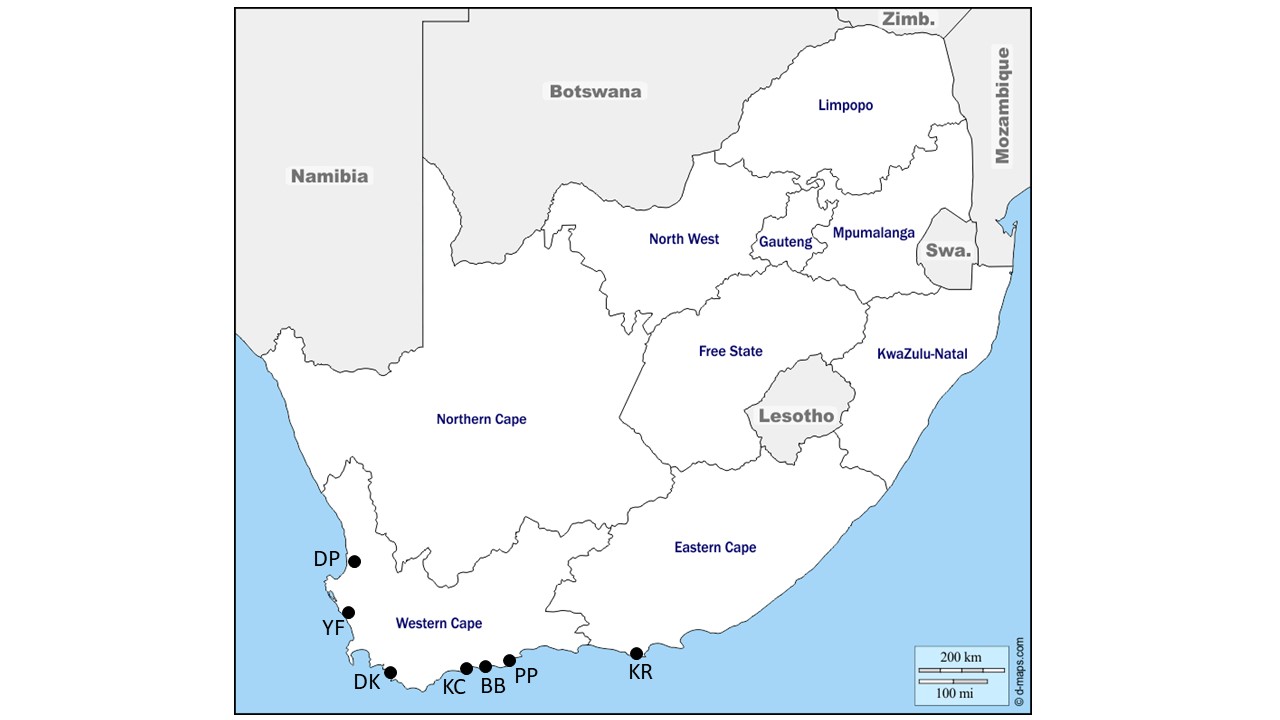Rhinoceros from the Middle Stone Age in the Eastern and Western Cape of South Africa
DOI:
https://doi.org/10.69649/pachyderm.v62i.288Abstract
In southern Africa, the Middle Stone Age (MSA), spanning more than 200,000 years, is a critical time period, in which Homo sapiens first appears. MSA sites located in the Eastern and Western Cape provinces of South Africa have yielded extensive faunal assemblages accumulated by anatomically modern humans. Many of these faunal assemblages include evidence of rhinoceros. To investigate how rhinoceros were potentially hunted/scavenged, we compare the representation of rhinoceros with that of large bovids and zebras in these faunal assemblages across seven sites in the region. All sites contain individual specimens of rhinoceros; however most faunal assemblages yielded only a few isolated specimens (201 specimens in total, representing 5% of the total sample). Similarly low representation was found for elephant and hippopotamus. In total, 60% of all the remains of rhinoceros accumulated during the MSA were found at a single site, Die Kelders. This indicates that people rarely brought back portions of rhinoceros carcasses containing bones to cave and shelter sites. The low frequency of rhinoceros findings suggests that people either did not regularly hunt or scavenge carcasses of these large ungulates, which are known for their aggressive behaviour; or, due to their large size inhibiting portability, they camped and feasted on rhino carcasses at sites where the animals were killed. In the latter scenario, meat containing a few bones could have been dried and brought to caves.
Résumé
En Afrique australe, l'âge de pierre moyen (MSA), qui s'étend sur plus de 200 000 ans, est une période critique, au cours de laquelle l'Homo sapiens apparaît pour la première fois. Les sites MSA situés dans les provinces du Cap oriental et occidental en Afrique du Sud ont produit de vastes assemblages fauniques accumulés par des humains anatomiquement modernes. Beaucoup de ces assemblages fauniques contiennent des preuves de rhinocéros. Pour étudier comment les rhinocéros ont été potentiellement chassés / récupérés, nous comparons la représentation des rhinocéros avec celle des grands bovidés et zèbres dans ces assemblages fauniques sur sept sites de la région. Tous les sites contiennent des spécimens individuels de rhinocéros; cependant, la plupart des assemblages fauniques n'ont donné que quelques spécimens isolés (201 spécimens au total, représentant 5% de l'échantillon total). Une représentation également faible a été trouvée pour les éléphants et les hippopotames. Au total, 60% de tous les restes de rhinocéros accumulés pendant la MSA ont été retrouvés sur un seul site, Die Kelders. Cela indique que les gens rapportaient rarement des parties de carcasses de rhinocéros contenant des os dans des grottes et des abris. La faible fréquence des découvertes de rhinocéros suggère que les gens ne chassaient pas régulièrement ou ne récupéraient pas les carcasses de ces grands ongulés, qui sont connus pour leur comportement agressif; ou, en raison de leur grande taille empêchant la portabilité, ils campaient et se régalaient de carcasses de rhinocéros sur les sitesoù les animaux étaient tués. Dans ce dernier scénario, la viande contenant quelques os aurait pu être séchée et amenée dans des grottes.

Downloads
Published
How to Cite
Issue
Section
License
Copyright (c) 2021 Pachyderm

This work is licensed under a Creative Commons Attribution-NonCommercial 4.0 International License.



